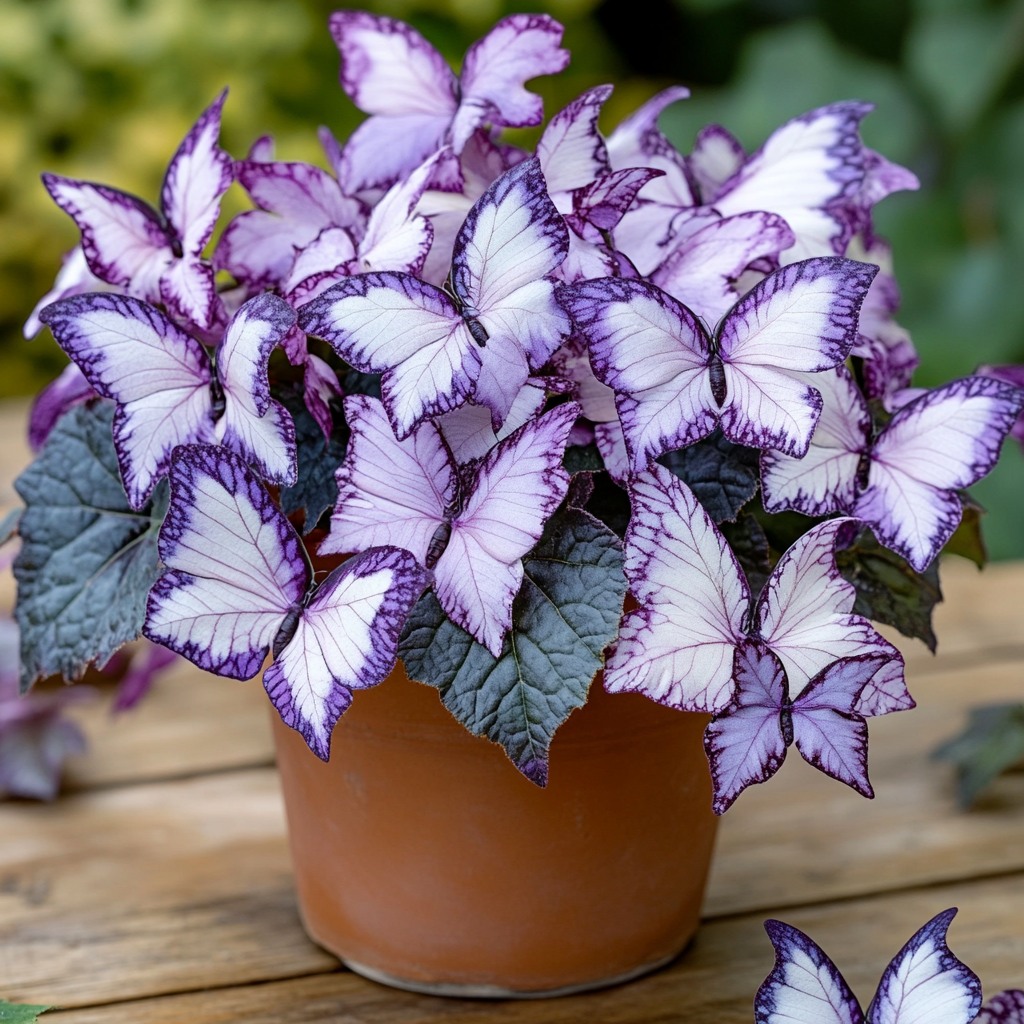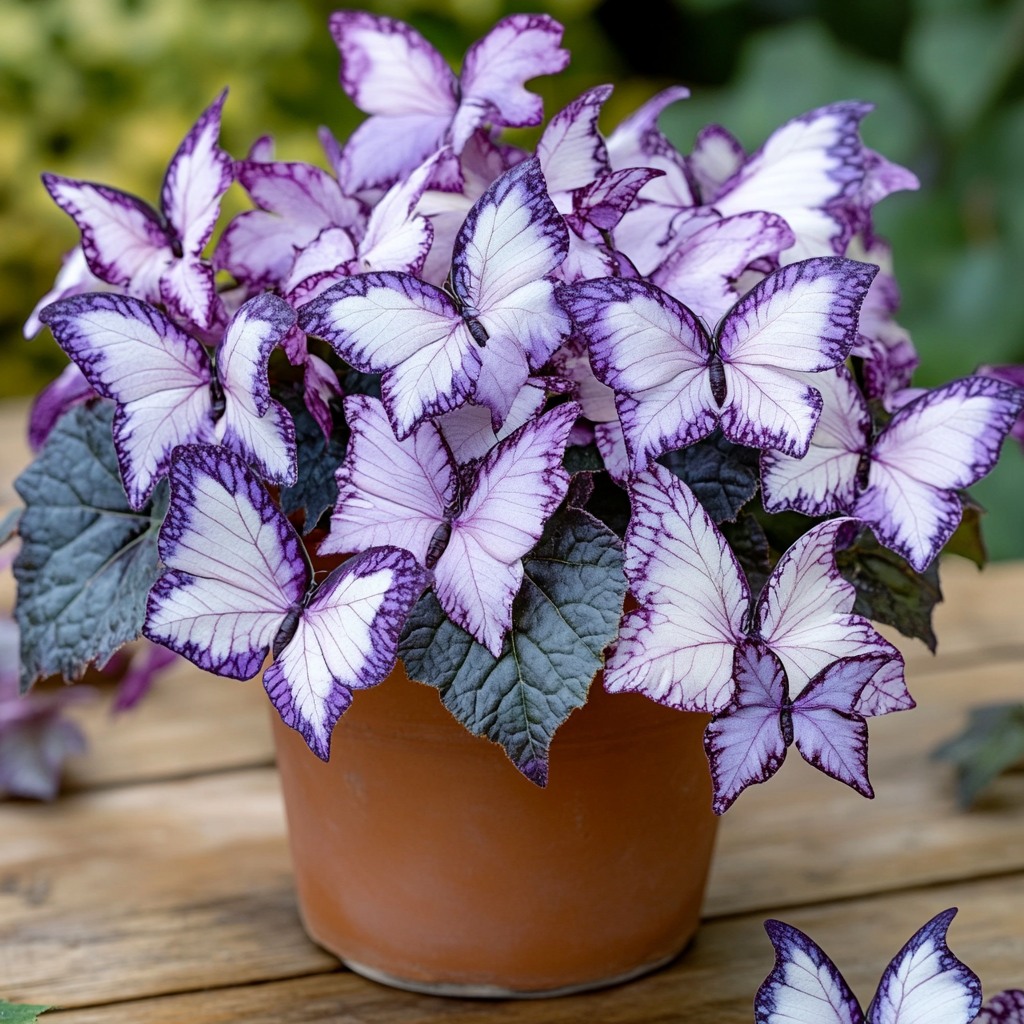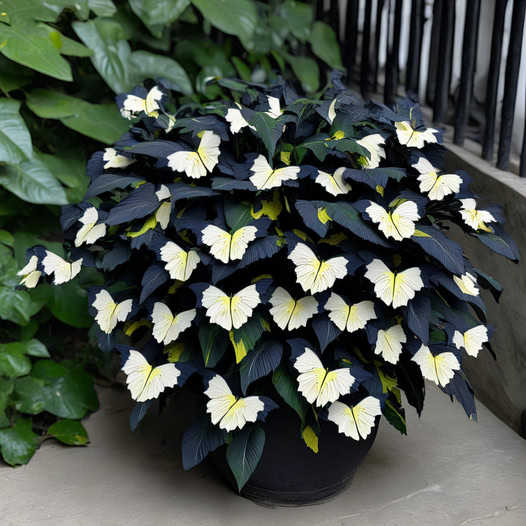The Butterfly Plant, often referred to as the butterfly bush or by its scientific name Buddleja, is a captivating perennial shrub that has captured the hearts and imaginations of gardeners and nature enthusiasts alike. This multifaceted gem in the horticultural world serves as a magnet for a diverse array of pollinators, including butterflies, hummingbirds, and bees, making it an essential component of many vibrant ecosystems.

What is the Butterfly Plant?
Overview of Butterfly Bush
The Butterfly Plant, or Buddleja, is a genus of perennial shrubs that belong to the Buddlejaceae family. These hardy plants are renowned for their remarkable ability to attract a wide variety of pollinators, earning them the moniker “butterfly bush.” The plant’s structure features elongated flower spikes that bloom in an array of captivating colors, including purple, pink, blue, and white. These visually stunning blooms not only create a picturesque landscape but also serve as a vital food source and habitat for numerous species, promoting ecological interdependence and enhancing the overall health of local flora and fauna.
Scientific Classification and Characteristics
The Butterfly Plant, or Buddleja, is a genus that comprises over 140 species of flowering plants, native to various regions around the world, including Asia, Africa, and the Americas. These shrubs are classified as part of the Buddlejaceae family, which is closely related to the Scrophulariaceae family. The Butterfly Plant is characterized by its distinctive foliage, which is typically lanceolate or oblong in shape, and its clusters of small, fragrant flowers that attract a diverse array of pollinators. The plant’s adaptability to a wide range of growing conditions, from full sun to partial shade, and its ability to thrive in various soil types, make it a versatile and valuable addition to any garden or landscape.
Ecological Importance of the Butterfly Plant
Attraction of Pollinators
The Butterfly Plant’s primary ecological significance lies in its ability to attract and support a wide variety of pollinators. The plant’s vibrant, nectar-rich flowers serve as a magnet for butterflies, hummingbirds, bees, and other beneficial insects, providing them with a reliable source of sustenance. This symbiotic relationship between the Butterfly Plant and its pollinators is crucial for the overall health and balance of local ecosystems. By offering a rich and abundant food source, the Butterfly Plant plays a vital role in sustaining pollinator populations, which are essential for the pollination of many crops and wild plants, contributing to food production and ecosystem stability.
Role in Biodiversity
Beyond its role as a pollinator attractor, the Butterfly Plant also serves as a valuable component of local biodiversity. The plant’s structure, with its diverse array of flowers and foliage, provides a multifaceted habitat for a wide range of species, from caterpillars and larvae to adult butterflies and other insects. This diversity of life, thriving within the Butterfly Plant’s canopy, contributes to the overall ecological richness of the surrounding environment, creating a vibrant and interconnected web of life.
Impact on Local Ecosystems
The Butterfly Plant’s influence on local ecosystems extends beyond its direct interactions with pollinators and other species. As a fast-growing and adaptable plant, the Butterfly Plant can thrive in a variety of conditions, including urban and suburban settings, where native habitats may have been disrupted or diminished. By providing a readily available source of food and shelter, the Butterfly Plant can help to offset the negative impacts of urbanization and habitat loss, acting as a lifeline for many struggling pollinator species. This ability to adapt and flourish in less-than-ideal conditions raises compelling questions about the balance between cultivating non-native plants like the Butterfly Bush and preserving indigenous flora, a topic we will explore further.

Benefits of Growing the Butterfly Plant
Enhanced Garden Aesthetics
Beyond its ecological significance, the Butterfly Plant also offers a remarkable aesthetic appeal that can greatly enhance any garden or landscape. The plant’s vibrant, nectar-rich flowers bloom in a stunning array of colors, creating a visually captivating display that attracts the attention of both human observers and the pollinators they support. The Butterfly Plant’s long flowering season, which can extend from late spring through early fall, ensures a prolonged period of visual delight, transforming gardens and outdoor spaces into veritable oases of natural beauty.
Support for Pollinator Populations
One of the most compelling reasons to incorporate the Butterfly Plant into your garden is its ability to support and sustain pollinator populations. In a world increasingly influenced by the effects of climate change and habitat loss, the Butterfly Plant’s role as a reliable food source and shelter for butterflies, hummingbirds, and bees becomes increasingly crucial. By providing these vital creatures with the resources they need to thrive, gardeners who cultivate Butterfly Plants are actively contributing to the preservation and restoration of local ecosystems, playing a vital role in the broader narrative of conservation.
Contribution to Food Production
The Butterfly Plant’s ecological significance extends beyond the confines of the garden, as it also plays a vital role in the larger food production system. Pollinators, such as bees and butterflies, are responsible for the pollination of numerous crops, ensuring the continued production of fruits, vegetables, and other agricultural resources. By supporting these pollinator populations, the Butterfly Plant indirectly contributes to the sustainability and resilience of our food supply, underscoring its importance in the broader context of global food security.
Choosing the Right Location for the Butterfly Plant
Sunlight Requirements
When it comes to cultivating the Butterfly Plant, it is essential to select the right location to ensure its optimal growth and performance. The Butterfly Plant thrives in well-drained soil and full sun exposure, requiring at least six hours of direct sunlight per day. By planting the Butterfly Plant in areas that receive ample sunlight, gardeners can foster an environment that encourages the plant’s vibrant blooms and attracts a diverse array of pollinators.
Soil Conditions and Drainage
In addition to sunlight requirements, the Butterfly Plant also has specific preferences when it comes to soil conditions and drainage. These plants prefer well-drained, slightly acidic soil with a pH range of 6.0 to 7.5. Ensuring proper soil drainage is crucial, as the Butterfly Plant is susceptible to root rot and other moisture-related issues if planted in areas with poor drainage. By carefully assessing the soil conditions and providing the necessary amendments, gardeners can create an ideal environment for the Butterfly Plant to flourish.
Companion Planting Strategies
When incorporating the Butterfly Plant into a garden or landscape, it is also important to consider companion planting strategies that can enhance the overall aesthetic and ecological benefits. Pairing the Butterfly Plant with other pollinator-friendly species, such as native wildflowers, can create a harmonious and mutually beneficial arrangement. These complementary plantings not only provide additional food and shelter for pollinators but also contribute to the visual appeal of the garden, creating a cohesive and visually stunning display.
Cultivation Techniques for the Butterfly Plant
Pruning Best Practices
Proper pruning is essential for maintaining the Butterfly Plant’s vibrant appearance and encouraging new growth. Regular trimming, typically during the late winter or early spring, can help to shape the plant, remove any dead or damaged stems, and stimulate the production of fresh, nectar-rich blooms. Gardeners must, however, exercise caution to avoid over-pruning, as this can compromise the plant’s ability to provide adequate food and habitat for pollinators.
Watering and Fertilization Needs
The Butterfly Plant’s water and fertilization requirements are also crucial considerations for successful cultivation. These plants generally prefer moist, well-drained soil and should be watered regularly, particularly during periods of drought or high temperatures. Regarding fertilization, a balanced, slow-release fertilizer applied in early spring can help to support the Butterfly Plant’s growth and flowering. Gardeners should, however, be mindful not to over-fertilize, as this can lead to excessive foliage growth at the expense of bloom production.

Pest and Disease Management
Like any plant, the Butterfly Plant is susceptible to various pests and diseases that can compromise its health and vitality. Common issues include aphids, spider mites, and powdery mildew. Gardeners should remain vigilant in monitoring the Butterfly Plant and addressing any emerging problems promptly, utilizing organic or environmentally-friendly control methods whenever possible. This diligent approach not only ensures the longevity of the Butterfly Plant but also protects the delicate ecosystem it supports.
Understanding Non-Native Species
Effects on Native Flora
While the Butterfly Plant’s ability to thrive in a wide range of conditions and its role as a pollinator attractor can make it a valuable addition to many gardens, there is also a need to carefully consider its potential impact on native plant species. In some regions, the Butterfly Plant has been known to become invasive, potentially outcompeting and displacing indigenous flora that have co-evolved with local pollinator populations over millennia. This dynamic raises important questions about the balance between cultivating non-native species and preserving the ecological integrity of native ecosystems.
Balancing Conservation and Cultivation
As gardeners and land managers navigate the complexities of introducing non-native species like the Butterfly Plant, it is crucial to strike a delicate balance between the benefits they provide and the potential risks they pose to local biodiversity. This requires a comprehensive understanding of the plant’s growth habits, reproductive strategies, and potential for spread, as well as a deep appreciation for the unique ecological relationships that have developed within the native plant communities. By carefully considering these factors and implementing thoughtful management strategies, gardeners can harness the Butterfly Plant’s valuable attributes while mitigating any unintended consequences.
The Butterfly Plant in Urban Landscapes
Adapting to Urbanization Challenges
In an increasingly urbanized world, the role of the Butterfly Plant in supporting pollinator populations becomes even more critical. As natural habitats are fragmented or destroyed to accommodate human development, many pollinator species struggle to find suitable environments in which to thrive. The Butterfly Plant’s adaptability to less-than-ideal conditions, such as those found in urban and suburban settings, makes it a valuable asset in providing much-needed nourishment and shelter for these vital creatures.
Creating Pollinator Corridors
By thoughtfully incorporating the Butterfly Plant into urban and suburban landscapes, gardeners and city planners can help to create interconnected “pollinator corridors” that enable the movement and dispersal of butterflies, bees, and other pollinators across fragmented habitats. These corridors not only benefit the pollinators themselves but also contribute to the overall health and resilience of the local ecosystem, promoting the pollination of both cultivated and wild plant species.
Community Gardening Initiatives
Engaging Local Communities
The cultivation of the Butterfly Plant extends beyond the realm of individual gardens, as it can also serve as a catalyst for community-based initiatives that promote environmental stewardship and ecological awareness. By engaging local residents in the establishment of community gardens or pollinator-friendly public spaces, these projects can foster a sense of collective responsibility toward supporting biodiversity and sustainable land management practices.
Educational Opportunities through Gardening
In addition to their practical benefits, community gardening initiatives centered around the Butterfly Plant can also serve as valuable educational platforms. By inviting local schools, youth groups, and community members to participate in the planting, maintenance, and observation of these vibrant, pollinator-attracting plants, these spaces can become hubs of learning and discovery. This hands-on engagement with nature can inspire a deeper understanding of the interconnectedness of ecosystems, the importance of pollinators, and the vital role that each individual can play in promoting environmental sustainability.
Personal Connection to Nature
Psychological Benefits of Gardening
The cultivation of the Butterfly Plant extends beyond its ecological significance, as it also offers profound psychological benefits to the individuals who engage with it. The act of gardening, particularly when focused on nurturing pollinator-friendly species like the Butterfly Plant, has been shown to have a calming and restorative effect on the human psyche. The opportunity to observe the intricate dance between plants and pollinators, to witness the transformation of a garden over time, and to connect with the rhythms of nature can all contribute to a greater sense of well-being and personal fulfillment.
Fostering Environmental Stewardship
Beyond the personal rewards, the Butterfly Plant also has the power to shape our collective relationship with the natural world. By cultivating these vibrant, pollinator-attracting plants, gardeners and community members can develop a deeper understanding of the interconnectedness of all living systems and their role as stewards of the environment. This heightened awareness can inspire a sense of responsibility and a desire to engage in broader conservation efforts, ultimately contributing to the collective goal of preserving the delicate balance of our ecosystems.
Conclusion
The Butterfly Plant, with its captivating blooms and its vital role in supporting pollinator populations, is a true gem in the world of horticulture. As we explore the multifaceted dimensions of this remarkable plant, from its ecological significance to its personal and community-level impacts, we unveil a rich tapestry of interactions that highlight the intricate relationships between plants, pollinators, and people. By cultivating the Butterfly Plant in our gardens and public spaces, we not only enhance the beauty of our surroundings but also actively contribute to the preservation and restoration of local ecosystems, ensuring a thriving and sustainable future for generations to come. Through our collective efforts, we can nurture a deeper appreciation for the natural world and our role as stewards, forging a harmonious coexistence between human activity and the delicate balance of nature.









